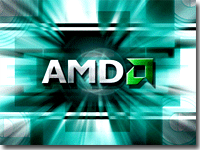Report: AMD Considered Buying Nvidia Before ATI Purchase
Former AMD employees claim the company had its eyes set on Nvidia first before purchasing ATI.
Former AMD employees told Forbes that the company approached Nvidia about a possible acquisition long before it pulled out the wallet to purchase ATI for $5.4 billion back in 2006.
At the time, AMD was out to get ahead of rival Intel by grabbing a piece of the GPU market and fusing the technology with its own CPU offering. Thus AMD would be in a position to provide a CPU/GPU solution that Intel really wasn't ready to offer.
But during the talks, Nvidia Chief Executive Jen-Hsun Huang reportedly insisted that he become chief executive of the combined company. Naturally AMD Chief Executive Hector Ruiz wasn't going to let that happen, so he chose to acquire rival ATI instead.
After the acquisition, AMD struggled to integrate its newly acquired graphics business as Nvidia unleashed a flood of strong products, consuming large chunks of market share. AMD eventually gathered its forces and fought back, but Nvidia had already moved aggressively into the mobile SoC market by introducing its ARM-based Tegra chip.
With Tegra installed in tablets and smartphones, Nvidia now has a market capitalization of $9.7 billion whereas AMD is worth just $5.2 billion.
Forbes said Nvidia declined to comment.
Get Tom's Hardware's best news and in-depth reviews, straight to your inbox.

Kevin Parrish has over a decade of experience as a writer, editor, and product tester. His work focused on computer hardware, networking equipment, smartphones, tablets, gaming consoles, and other internet-connected devices. His work has appeared in Tom's Hardware, Tom's Guide, Maximum PC, Digital Trends, Android Authority, How-To Geek, Lifewire, and others.
-
iLLz "But during the talks, Nvidia Chief Executive Jen-Hsun Huang reportedly insisted that he become chief executive of the combined company."Reply
Yea that sounds like him... -
tiang I don't see that there is a problem for AMD graphic card to be on top of the graphic card world in future with the great improvement of each generation of card they produced. Sooner or later, it will be like Intel dominated the desktop processor segment and AMD GPU will dominated the discrete GPU segment. Well done AMD, you made the right choice to acquire ATI even struggled so hard at the beginning.Reply -
greenspoon I thought this was already known. I remember a lot of talk about this right after the merger.Reply -
joytech22 Relevant: I wonder how AMD would have done if they had to integrate Fermi into their CPU's.. lol..Reply
Joking aside, I seriously wonder what they would have done if they did manage to obtain Nvidia, what kind of things they would have done together.
Irrelevant:
AMD has kept Radeon's past work strong and has had the fastest dual-GPU cards for two generations as well as amazingly competitive single-GPU performance.
I don't think competition has ever been this close, Nvidia and AMD are trading blows like crazy in every segment from low-end right up through to high-end.
I just wish they did the same in the CPU market for their high-end CPU's. -
mr_wobbles That could have been a better choice, because ATi was sort of bankrupt. AMD could have had a Monopoly on GPUs.Reply -
joytech22 mr_wobblesThat could have been a better choice, because ATi was sort of bankrupt. AMD could have had a Monopoly on GPUs.Reply
That would have been terrible, pricing would be through the roof for the most part.
We need competition to keep prices down, look at how Intel is keeping AMD in check when it comes to pricing.
AMD is CURRENTLY known for it's cheap yet capable CPU's, now look at their GPU's and you'll find the 7970 for like $700 AUSD, almost as much as a 6990 here.
If Nvidia releases something competitive enough it'll drive down the price.
We need competition. -
NapoleonDK It really makes you wonder where the technology would be today if AMD had gone with Nvidia instead. Theories?Reply
A few months after AMD bought ATI, Nvidia releases the Geforce 8-Series. A year and a half later, Tegra is announced, but it's another year and a half before anyone uses it. (ZuneHD) Meanwhile, ATI/AMD pushes the unamusing HD2XXX/HD3XXX out to compete with the power hungry 8 and 9-series.
In the background to all this, Nvidia is polishing Tegra and AMD is developing Fusion. (While the iPhone changes the face of mobile computing and the public begin demanding more and more mobile devices to compete.)
Intel was of course owning the x86 market and developing Larrabee...I wonder if Intel hadn't wasted time on that, if they would have been willing to give Jen-Hsun Huang the seat he wanted in order to sell his company? I'm surprised that Huang even considered selling out to AMD, it doesn't seem like something he would do, even for a seat on the board.
Anyway, imagine a world where Intel is producing Fusion APU's with ATI, and Nvidia instead buys AMD and begins making both ARM and x86 processors with fermi-like power consumption! X_x -
AMD was a failure under Ruiz, and is a failure to this day. Nvidia could have made AMD a competitor to Intel, instead of the joke of the hardware world.Reply
-
fazers_on_stun Hmm, Jen Hsun-Huang would probably have not run AMD into the ground and force them to sell off their fabs, although JHH does occasionally open a 'can o' whoopass' on himself :P.Reply
Too many big egos to fit into one combined company, IMO..
